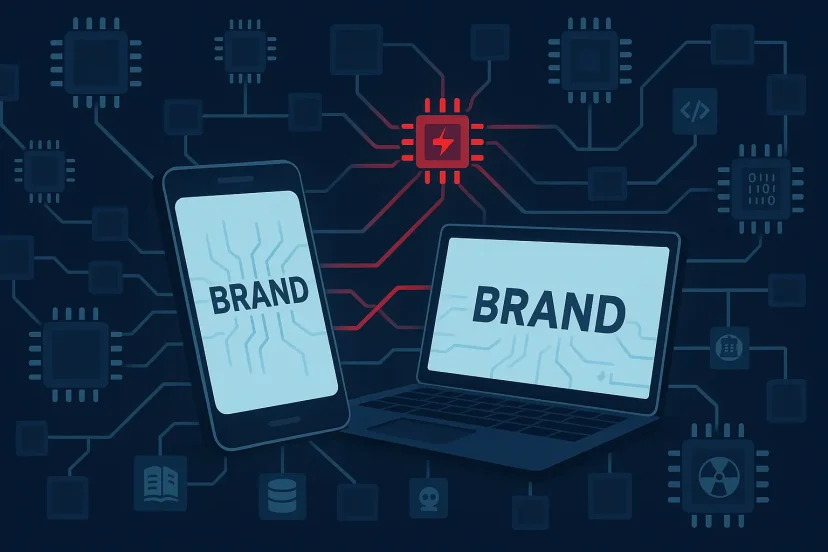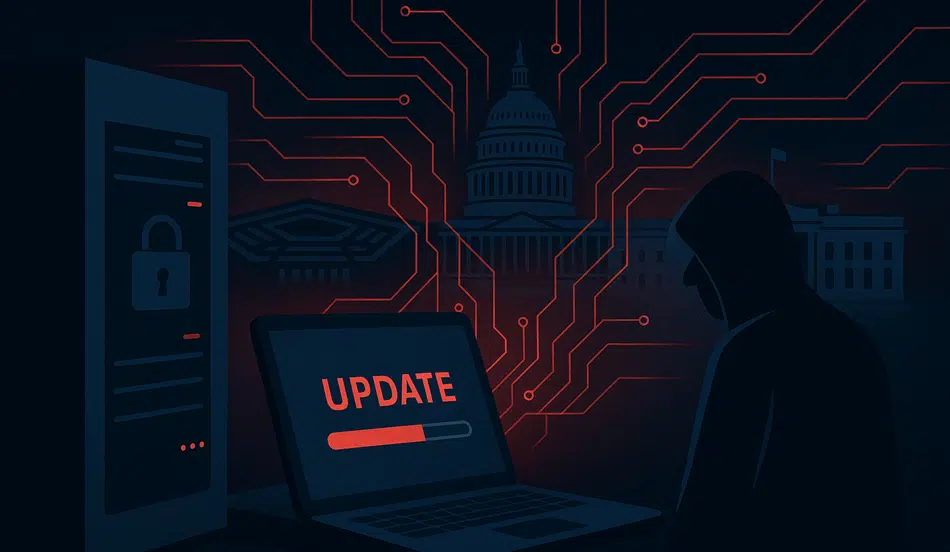In late 2020, the world discovered one of the largest cyber espionage campaigns in history. A little-known Texas software company called SolarWinds became the entry point for a supply chain attack that reached into the heart of the U.S. government, military, and Fortune 500 companies.
The story of the SolarWinds hack is not just about one company’s security failure. It is a cautionary tale about how fragile modern digital supply chains are, and how one weak link can ripple across the entire world.
A Breach at the Heart of Government
Imagine you are a Secret Service guard at the White House. You watch the cameras, but at the same time, your every move is being watched by your superiors. That is how security works in the most protected building in America.
But in 2019 and 2020, unknown hackers found a way past all of that. They slipped into the White House network not by breaking down the front door, but by exploiting the software it relied on to run smoothly.
The attackers discovered a back door inside SolarWinds Orion, a widely used IT management tool. With Orion updates, the hackers could secretly install malicious code into the systems of its clients—including the White House, Pentagon, National Security Agency, U.S. military, and 425 of the Fortune 500 companies.
For nearly a year, attackers had access to sensitive government communications without detection.
What Is a Supply Chain Attack?
To understand how this happened, you need to picture modern technology supply chains.
Your phone or laptop might carry one familiar brand name. But inside it are hundreds—sometimes thousands—of parts made by smaller companies. Software is even more complicated. Apps are built using libraries, plugins, and code from dozens of other vendors.
If just one vendor is compromised, every company down the chain is at risk.
This is what security experts call a supply chain attack. Instead of hacking one company at a time, attackers target the supplier at the top, then let the infection spread automatically to everyone who uses their products.
History is full of examples:
- In 2017, the NotPetya attack spread worldwide after hackers compromised Ukrainian tax software.
- In 2022, a developer mistake leaked the personal data of 1 billion Chinese citizens.
- Even Stuxnet, the U.S.-Israeli cyber weapon that hit Iranian nuclear facilities, is believed to have been delivered through infected supply chains.
SolarWinds was the latest—and biggest—example.

How the Hack Worked
We still do not know exactly how the hackers first entered SolarWinds. Most experts believe it was through a zero-day vulnerability or highly targeted phishing attacks.
Here’s what we know:
- Initial Access
Hackers gained access to SolarWinds’ internal systems, possibly by tricking an employee with a seemingly harmless LinkedIn link or email. - Planting the Backdoor
Once inside, they inserted malicious code into Orion software updates. These updates looked completely legitimate and were even signed with SolarWinds’ official security certificate. - Delivery to Clients
Between March and June 2020, as many as 18,000 customers downloaded the compromised updates. - Selective Exploitation
The malware, known as SUNBURST, contacted command servers disguised as normal internet traffic. Hackers then chose high-value targets and installed custom tools to spy on emails, steal files, and move deeper into networks.
Who Was Behind It?
Nearly every major cybersecurity agency—including the FBI, NSA, and Britain’s NCSC—blamed the attack on Russia’s SVR intelligence agency, known in the hacker world as Cozy Bear.
Evidence included:
- Malware code linked to older Russian intelligence tools.
- Similar methods seen in past Russian cyber campaigns.
- The scale and patience of the operation, which required resources beyond ordinary criminals.
Later, Microsoft revealed a second, smaller breach at SolarWinds by a suspected Chinese group called Spiral, using a different technique. This made the case even more alarming: two different state-backed actors were inside SolarWinds at the same time.
Strengthen Your Supply Chain Security
Post your job on WhatJobs and hire cybersecurity pros—threat hunters, GRC leads, AppSec engineers, and vendor-risk analysts—to reduce exposure from third-party and software supply chain attacks.
Post a Job Now →Discovery by Accident
Strikingly, U.S. intelligence agencies did not catch the hack. It was discovered by FireEye, a cybersecurity firm that was itself a SolarWinds customer.
FireEye noticed unusual behavior in its network—hackers using modified Cobalt Strike security tools. Tracing the activity, engineers found the problem inside their SolarWinds Orion system.
They reported it, reverse-engineered the malware, and went public in December 2020. Working with Microsoft and GoDaddy, they even managed to “sinkhole” the hackers’ command server, cutting off further damage.
By then, however, the attackers had been inside U.S. systems for months.
Fallout and Political Shock
The revelation sent shockwaves through Washington and Wall Street.
- Congressional Hearings: Executives from SolarWinds, FireEye, and Microsoft testified before lawmakers.
- Embarrassment: It emerged that even the White House networks may have been compromised.
- Finger-Pointing: SolarWinds’ CEO controversially blamed an intern who used the weak password “solarwinds123”—a claim widely mocked by security experts.
Former President Donald Trump downplayed the attack, suggesting China might be responsible. But nearly every other U.S. agency and independent analyst maintained Russia was behind it.
Why SolarWinds Was So Vulnerable
Several factors made the attack possible:
- Wide Reach: SolarWinds Orion was used by thousands of critical organizations.
- Weak Security: Reports showed poor internal practices, including unsecured servers and outdated code.
- Trusted Position: Because Orion updates were digitally signed, antivirus tools saw them as safe.
This combination created a perfect storm: one update, and the world’s most powerful government was compromised.
Lessons Learned
The SolarWinds hack changed how governments and companies think about cybersecurity.
- No System Is Too Small to Matter
SolarWinds was not a household name, but it controlled the digital plumbing of critical institutions. - Supply Chains Are the Weakest Link
Protecting your own system is not enough if your vendor is compromised. - Detection Is Critical
Even the best defenses can be breached. The key is spotting unusual activity quickly. - Public-Private Cooperation
The U.S. government issued Executive Order 14028, pushing agencies to share threat information with private companies like Microsoft and FireEye.
The Lasting Impact
We may never know exactly what data was stolen. Did spies get exposed? Did military plans leak? Was the President’s own network compromised? Officials remain silent, both for national security reasons and to avoid further embarrassment.
What is clear is that trust in digital infrastructure was shaken worldwide. The SolarWinds hack proved that no matter how powerful a country is, its security can still be undone by a single vendor halfway down the supply chain.
As one security researcher put it:
“This was not just a breach. It was a reminder that in today’s world, everyone’s safety depends on the weakest link in the chain.”
FAQs
1. What exactly is SolarWinds?
SolarWinds is a Texas-based software company that provides IT management tools. Its product Orion helps companies and governments monitor their networks.
2. How many organizations were affected by the hack?
Out of SolarWinds’ 300,000 customers, about 18,000 installed the infected update. Dozens of the most high-profile targets—government agencies and top corporations—were then deeply infiltrated.
3. Who was behind the SolarWinds hack?
Most evidence points to Russia’s SVR intelligence agency (Cozy Bear). A second, smaller breach was later linked to a Chinese group called Spiral.
4. Could the attack have been prevented?
Experts say total prevention would have been difficult, since the attackers used highly advanced techniques. But stronger internal security at SolarWinds, stricter supply chain audits, and faster detection could have reduced the damage.




